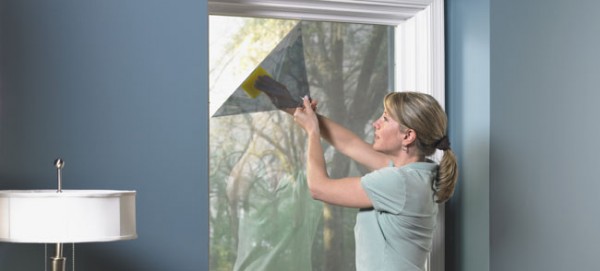Energy-efficient windows are essential not only to trap heat during the winter, but also block harmful rays. In general, good quality windows should reject more than 99 percent of UV rays. This will reduce the risk of skin cancer and fading of the furniture. Other than using low-E glass and double-glazed design, we should make sure that the amount of heat loss should be higher than 40 percent. Also, more than 50 percent of the solar energy should be absorbed by the interior, without involving the harmful UV rays.
Windows film isn’t only reduce glare and increase thermal comfort, it could also provide multiple energy-saving benefits. There are different brands of windows film and comparing them can be quite tricky. Also, the effectiveness of windows films will be different on single-glass and dual-glass windows. This is particularly true on double-glazed windows with Argon gas between the layers that can be especially efficient in preventing heat from escaping.
Energy efficient films for windows are often made with advanced and sophisticated technology. However, even the best films in the market won’t be too effective if the construction of windows frame is not appropriate. In this case, we should make sure these windows have proper spacers, seals and gaskets. Without proper construction, these windows will have poor energy efficiency. Under certain conditions, highly efficient windows could save our energy bills during the winter by up to 40 percent.
In this case, we should get advices from reputable professionals to know how we can get the best possible savings. They should know whether windows that we use at home could reach specific energy efficiency standards. We often need to access technical data to know whether we have proper windows. Energystar.gov provides guidelines on how to choose an energy-efficient window. In general, these windows should be airtight and efficient enough. Glass panes should be constructed properly and they can reflect UV rays and absorb sun energy during the day. This will be appropriate for people who live in colder areas.
There are different factors that we need to consider when we are planning to purchase energy films for windows:
• U-Rate:
U-Rate is the coefficient of heat transmission and it measures heat loss from non-solar sources, such as the interior of the house. It gauges how well a specific material allows the transmission of heat and it is graded between 0.2 and 1.2. In this case, we should choose windows with lower U-Rate. An inverse of the U-Rate is known as R-value and we should choose windows with higher R-value.
• Solar Heat Gain Coefficient (SHGC):
It measures how much heat we could gain from solar radiation, both transmitted directly by sunlight or absorbed from external surface that accumulates energy from solar radiation. It is rated between 0.00 and 1.00. In this case, we should choose windows with higher SHGC, because they will be able to transmit solar heat better.
• Visible Transmittance (VT):
It determines the amount of visible sunlight (excluding harmful UV rays) that can be transmitted by the windows into the interior. It is rated between 0.00 and 1.00 and we should choose the highest value




